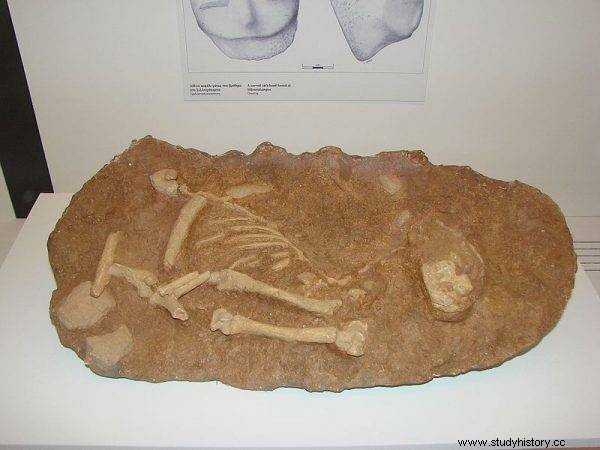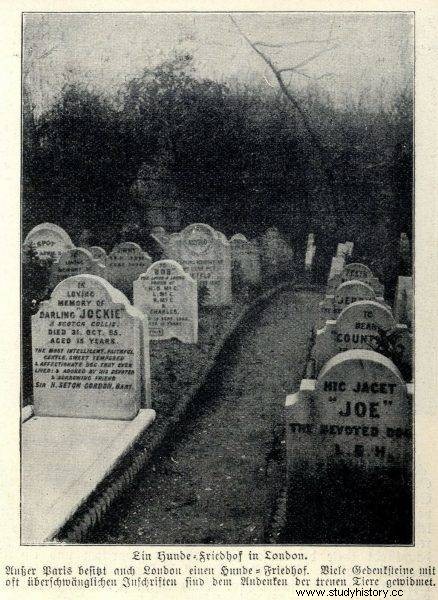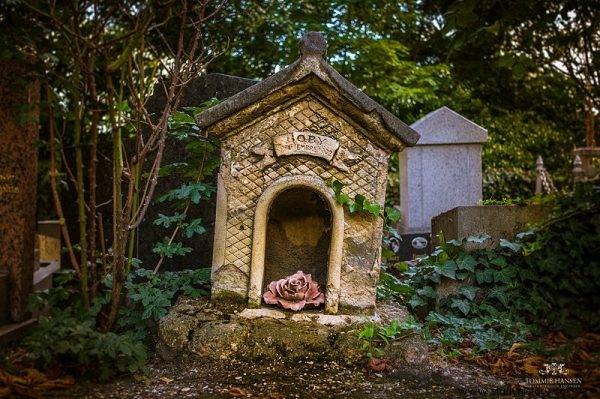Thousands of years ago, humans tame and become attached to wild animals. They even had their pets in cemeteries. And much sooner than you might think.
A tomb from ... fourteen thousand years ago. This is the estimation of the oldest animal remains found so far, bearing the features of a burial. Burying domesticated wolves was probably not a common practice in the Neolithic period. However, it cannot be said that this did not happen at all . As archaeologist Robert Losey says: is a very, very long time practice . Animal graves from different eras are found almost all over the world.
How do we know that we are talking about deliberate burials, and not accidental bodies of fallen wolves? First of all, the found skeletons are complete, regularly arranged and show no signs of serious injuries. The ground around them is much looser than it should be. You can quite accurately determine where someone dug a deep hole and then filled it in again. On the other hand, animal carcasses under "standard" conditions usually have fragmented, gnawed skeletons. The soil around them is just as compact everywhere.
Why did people bury animals?
Today it is difficult to talk about the intentions of people from several thousand years ago. There are most likely three explanations for similar finds. Buried bodies could be victims, part of rituals and ceremonies. It is also possible that they were buried for purely pragmatic reasons :to avoid the smell of decay and not to attract scavengers. And finally, perhaps some prehistoric people kept their tame animals ... out of attachment.

A cemetery for ... animals? This is not a modern fad at all.
The latter is particularly evidenced by the Neolithic find from Bonn-Oberkassel in Germany. An approximately six-month-old puppy was buried there along with a middle-aged man and a woman between 20 and 30 years of age. It is reminiscent of family burials. Several small items were found there:a hairpin, a deer figurine and a bear's penis bone. This element had a ritual significance in many primitive cultures.
In turn, excavations in Russia, near Lake Baikal, suggest that our Neolithic ancestors believed in the posthumous life of animals. In the several thousand-year-old cemeteries discovered there, people were buried next to their four-legged companions. Judging by the skeletons, these died a natural death. Interestingly, sometimes even human graves were dug up to place an animal's body in them.
Mummified cats
Let's move to ancient Egypt. There was a special place there ... cats. Unfortunately for them, was often associated with sacrificial rituals and mummification . Animals were to accompany people in the afterlife. This practice is quite commonly known and associated with this country. Is it right?

The remains of a cat buried over 7,000 BC.
As it turns out, the cat's death was not only sacrificial. It would be difficult, given the attitude of the Egyptians towards these animals. And the research from 2016 in Berenike proved that the inhabitants of this city provided them with a dignified burial. In the years 75–150 CE there was even a separate cemetery. He was out of the way. It rested nearly 100 domestic animals, most of them cats. The place was intended only for pets. No skeleton found there shows any signs of sacrifice. They were also not mummified. Some of them had metal collars around their necks.
She was a good pet…
If we are already with cats - it would be a crime to skip the Victorian era. In the 19th century, it happened that even some clergy hid their pets in decorative oak coffins. But one by one.
The custom of burying animals in public in 19th century England began with Cherry, a Maltese terrier puppy who died on April 28, 1881. The dog rested in London's Hyde Park. Cherry became the first "resident" of a pet cemetery there . With time, more tombstones appeared there. Some of them even had stone carvings.

The custom of burying animals in public in 19th century England began with Cherry, a Maltese terrier puppy who died on April 28, 1881.
Coming back to cats:in the late nineteenth century, newspapers took up the subject of a lady from Kensington, who decided to say goodbye to her four-legged friend. Paul, with whom she spent 17 years of her life, received an ornamented oak coffin and a wreath of flowers, which aroused widespread interest at the time. While such rituals were usually treated as the idiosyncrasies of rich people, the results were sometimes unpleasant. For some people were outraged by the equating animal with man. So much so that there were occasions when the ceremony was interrupted or the grave was devastated. Especially when it stood in a… human graveyard.
What does the Church say?
It is worth mentioning here that the Victorian period is quite characteristic in terms of mourning. It became public and regulated by many moral norms. And animal grief was no exception. And although due to the strong religiosity of the British, there could be no afterlife, the funeral rites organized by the richer inhabitants were not modest.

Funeral rites organized by the richer inhabitants were not modest.
The church, of course, did not approve of such practices. However, this did not stop even the clergy. A certain priest, whose name is unknown today, decided to bury his cat in 1897. The Hull Daily Mail issue describes how the man traveled on the train with an oak, brass-wrapped coffin in which a pet's corpse rested. Relationships regarding the place were divergent. However, they agreed on the fact that there was a solemn funeral ceremony at the destination of the trip.
As for the tombstones, most of them had simple epitaphs. Some animals received carvings and entire elegies. Quirky? Yes. But what is not done for a beloved pet?
